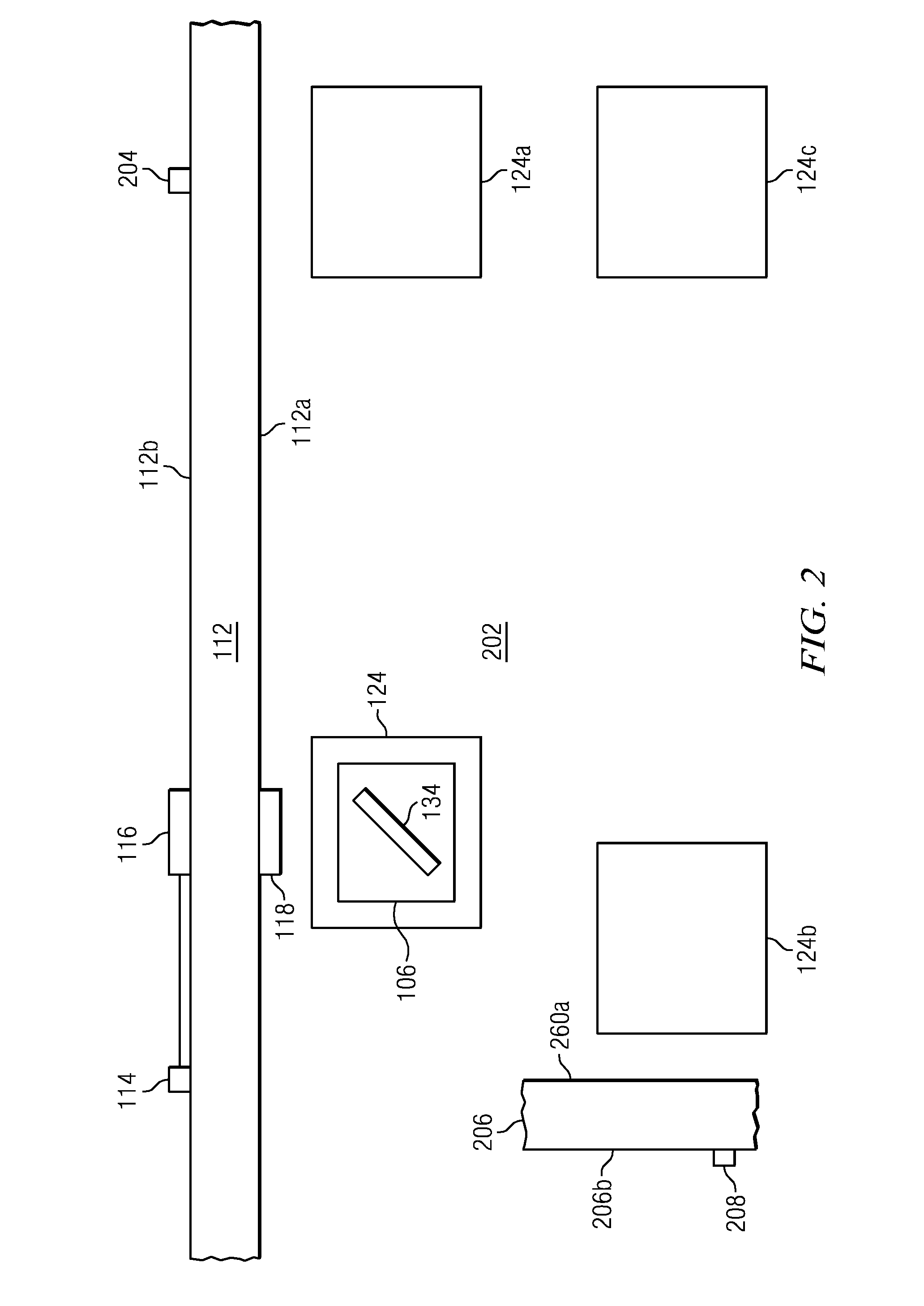Robot power source charging station
a charging station and power source technology, applied in the field of robot power source charging stations, can solve the problems of significant drawbacks or deficiencies of charging arrangements of this type, when used outdoors, degraded or diminished the ability to transfer power to the robot, use of conductive elements, and oxidation and mechanical fatigu
- Summary
- Abstract
- Description
- Claims
- Application Information
AI Technical Summary
Problems solved by technology
Method used
Image
Examples
Embodiment Construction
[0011]Referring to FIG. 1, there is shown a service robot 102 for performing outdoor tasks of some type, as directed by a conventional control mechanism (not shown) that may be remotely located or carried aboard the robot. Robot 102 may by way of example comprise a robotic lawnmower, but the invention is not limited thereto. FIG. 1 shows robot 102 provided with a rechargeable electric battery 104, which provides power for moving and maneuvering robot 102, and also for performing other functions needed in the operation of robot 102.
[0012]FIG. 1 further shows a charging station 106, which is provided to charge or recharge battery 104 of the service robot 102, as required. Station 106 is removably placed upon a plate or base plate 124, described hereinafter in further detail. In accordance with an embodiment of the invention, station 106 is furnished with a wireless power transmitter 108, which is coupled to a source of power as likewise described hereinafter in further detail. Robot 1...
PUM
 Login to View More
Login to View More Abstract
Description
Claims
Application Information
 Login to View More
Login to View More - R&D
- Intellectual Property
- Life Sciences
- Materials
- Tech Scout
- Unparalleled Data Quality
- Higher Quality Content
- 60% Fewer Hallucinations
Browse by: Latest US Patents, China's latest patents, Technical Efficacy Thesaurus, Application Domain, Technology Topic, Popular Technical Reports.
© 2025 PatSnap. All rights reserved.Legal|Privacy policy|Modern Slavery Act Transparency Statement|Sitemap|About US| Contact US: help@patsnap.com



